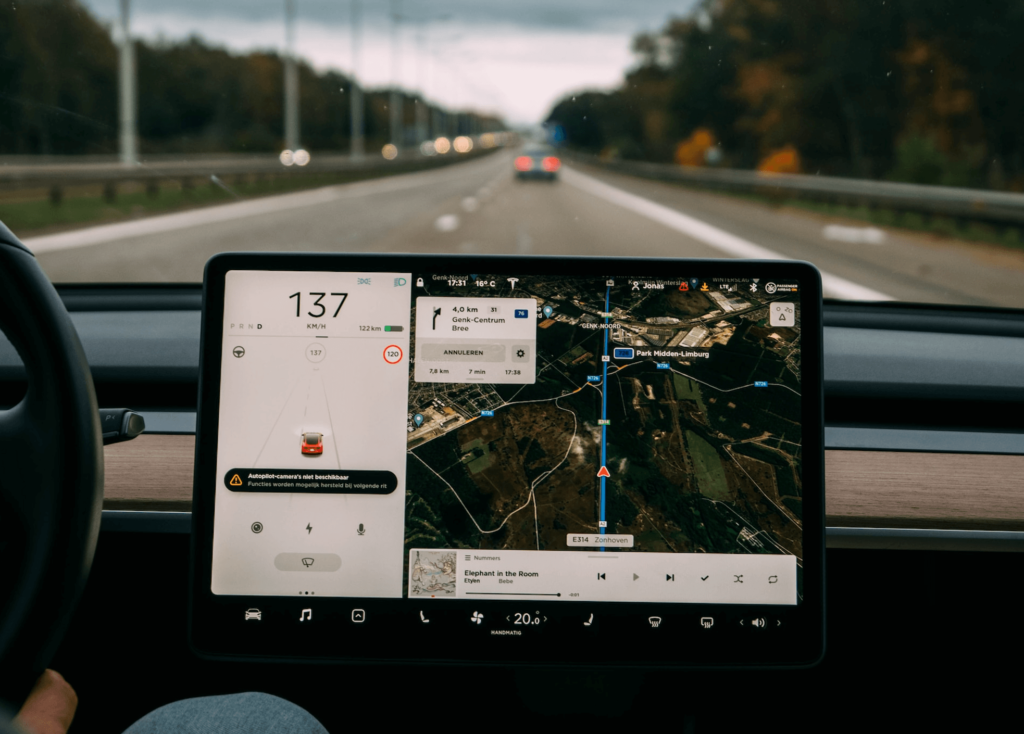7 min read
Listen and understand your customers. Win them at any stage of their journey.
cx Platform
The automotive industry is amid a remarkable transformation driven by customers’ ever-changing needs and expectations. As we venture into 2023, customer experience has become the driving force behind successful automotive businesses. From personalized offerings to seamless digital interactions, innovative customer-centric trends are shaping the industry’s future. We’ll explore five customer experience trends that are taking the automotive world by storm, empowering companies to forge deeper connections with their customers and deliver exceptional journeys beyond mere transportation.
Increased focus on both purchase and service experience
In recent years, the automotive industry has recognized the importance of focusing on the purchase experience and the service experience to enhance overall customer satisfaction and loyalty.
1. Streamlined Purchase Process:
Automotive companies are streamlining the purchase process to make it more efficient and customer-friendly. They are leveraging digital platforms to enable customers to research vehicles, compare models, and even configure their desired cars online. This empowers customers with the information they need to make informed decisions before setting foot in a dealership.
Companies also use customer needs surveys to best tailor their offer. Consumer preference surveys are critical for businesses to keep up with the changing needs and wants of their target audience

Moreover, transparent pricing and simplified financing options are being offered to build trust and eliminate the traditional back-and-forth negotiation process. Some companies are also experimenting with online purchasing options, allowing customers to buy their vehicles entirely over the internet, bringing further convenience to the car-buying journey.
2. Enhanced Customer Service and Support:
Providing exceptional customer service has become a priority for automotive companies. Manufacturers and dealerships are investing in training their staff to offer personalized and attentive customer service at every touchpoint. Whether it’s answering inquiries, addressing concerns, or guiding customers through the features of their new vehicles, the focus is on making customers feel valued and supported.
The customer effort score survey is a good metric for measuring customer interaction’s success—or ease—.
Additionally, with technological advancements, companies are adopting digital tools to improve post-purchase support. Online service portals allow customers to schedule maintenance appointments, access service records, and receive timely reminders for essential check-ups. This digitalization enhances convenience and improves the overall efficiency of service operations.
3. Customer-Centric Service Facilities:
Automotive service centers are evolving to become more customer-centric. Companies are revamping their service facilities to create welcoming environments that prioritize customer comfort and convenience. Waiting areas are designed with amenities like free Wi-Fi, refreshments, and comfortable seating, ensuring customers have a pleasant experience while their vehicles are being serviced.
Moreover, some automotive companies are exploring the concept of mobile service units, where service technicians visit customers’ locations for routine maintenance or minor repairs. This approach caters to customers’ busy schedules and eliminates the need for them to visit physical service centers.
Emphasis on Sustainability and Eco-Friendly Solutions
The emphasis on sustainability and eco-friendly solutions has become a defining trend in the automotive industry. As environmental awareness continues to grow, automotive companies are proactively addressing the need for cleaner and more sustainable transportation options. This trend is reshaping the industry and driving the development of innovative technologies and practices.
1. Electric Vehicles (EVs):
Electric vehicles have become a cornerstone of the automotive industry’s sustainability efforts. Automotive companies are investing heavily in the development of EVs, offering an increasing variety of models with extended ranges and improved charging infrastructure. This shift towards EVs reduces greenhouse gas emissions, air pollution, and dependence on fossil fuels.
2. Alternative Fuel Options:
In addition to EVs, automotive companies are exploring alternative fuel options such as hydrogen fuel cells, compressed natural gas (CNG), and biofuels. These alternatives offer lower emissions and reduced environmental impact compared to traditional gasoline or diesel engines.
3. Carbon-Neutral Initiatives:
Automotive companies are taking steps to reduce their carbon footprint across the entire value chain. This includes implementing energy-efficient manufacturing processes, using sustainable materials, and investing in renewable energy sources. Some companies even commit to carbon-neutral initiatives, aiming to balance their emissions through strategies like carbon offset projects.
Seamless customer experience journey management with digital adoption
Seamless customer experience journey management with digital adoption has become a crucial aspect of the automotive industry’s strategy to attract and retain customers. In a rapidly evolving digital landscape, automotive companies are leveraging technology to create a seamless and personalized customer journey from the first touchpoint to post-purchase support.
1. Digital Showrooms and Virtual Test Drives:
Automotive companies are investing in digital showrooms and virtual test drive experiences. Through immersive virtual reality (VR) and augmented reality (AR) technologies, customers can explore the latest car models, customize their preferences, and even take virtual test drives from the comfort of their homes. This provides convenience and allows customers to get a feel for the vehicle without physically visiting a dealership.
2. Online Vehicle Research and Configuration:
Digital adoption enables customers to research vehicles thoroughly, compare different models, and configure their dream cars online. Automotive websites are equipped with comprehensive product information, 360-degree views, and interactive configuration tools, giving customers the ability to personalize their vehicles based on their preferences and budget.
3. Transparent Pricing and Financing:
Digital platforms have facilitated transparent pricing and financing options. Customers can access upfront pricing, view incentives, and calculate monthly payments online. This transparency builds trust and helps customers make more informed decisions during the purchase process.
Subscription Services and Car Sharing
The surge in popularity of subscription services and car-sharing models reflects a significant shift in how people perceive and engage with personal transportation. As mobility preferences evolve, these innovative approaches reshape the automotive industry and provide customers with newfound freedom and convenience.
1. Embracing Flexibility:
In an era of highly valued flexibility, subscription services and car-sharing have emerged as perfect solutions. These models allow customers to adapt their transportation choices to their needs, whether it’s a short trip to the grocery store or an extended weekend getaway. With no long-term commitment, customers can switch vehicles as circumstances demand, enjoying the freedom to choose without the weight of ownership.
2. Access to Variety:
The allure of experiencing different vehicle types is a driving factor behind the popularity of these models. Subscribers can easily switch between a sleek sedan for city commuting, an SUV for family trips, and even an electric vehicle for eco-conscious days. This versatility enables customers to tailor their transportation to their activities, preferences, and moods.
3. Financial Efficiency:
The financial benefits of subscription services and car-sharing are evident. Participants sidestep hefty down payments, maintenance costs, and depreciation concerns associated with ownership. Instead, they pay a predictable monthly fee that often includes maintenance, insurance, and other essentials, creating a more predictable budgeting process.
Proactive Customer Support and Predictive Maintenance
Indeed, proactive customer support and predictive maintenance have become integral components of the automotive industry’s customer experience strategy. By harnessing the power of data analytics and artificial intelligence (AI), automotive companies are revolutionizing how they anticipate and address customer needs, resulting in enhanced satisfaction and vehicle longevity.
1. Continuous Performance Monitoring:
Automotive companies are equipping vehicles with advanced sensors and telemetry systems that collect real-time data on various components and systems. These sensors continuously monitor the vehicle’s performance, analyzing factors such as engine health, tire pressure, battery condition, and more. This continuous monitoring allows for early detection of anomalies or potential issues.
2. Predictive Analysis:
Using AI-driven predictive analytics, automotive companies can analyze vehicle data to identify patterns and trends. This enables them to anticipate potential problems before they occur. For instance, the system might detect a slight drop in fuel efficiency or a gradual decline in brake performance, triggering alerts to both the driver and the manufacturer.
3. Proactive Alerts and Notifications:
When an issue is identified or predicted, the vehicle’s onboard system can send proactive alerts to the driver, providing information about the detected problem and suggesting the appropriate actions to take. Additionally, the manufacturer’s customer support team may also be alerted, allowing them to reach out to the customer and offer guidance or schedule necessary maintenance.
Wrapping up 🚀
The automotive industry is undergoing a transformative journey driven by evolving customer expectations. In 2023, customer experience takes the driver’s seat, shaping innovative trends that redefine the landscape. From streamlined purchases to personalized services,. Manufacturers and dealerships invest in staff training for personalized interactions. Sustainable solutions, like electric vehicles and carbon-neutral initiatives, drive a greener future. The digital age is harnessed with virtual showrooms, while subscription services offer unparalleled flexibility. Proactive support fueled by data analytics ensures a smoother ride, detecting issues before they escalate. These trends steer the automotive realm towards exceptional customer journeys and lasting connections beyond the road.






